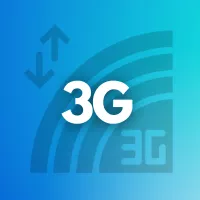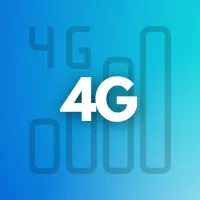Key Difference: 3G is the third generation of wireless mobile phone technology. It is the upgraded version of 2G, 2.5G, GPRS (General Packet Radio Service), and 2.75G EDGE (Enhanced Data Rates for GSM Evolution) networks. With the help of this 3G telecommunication technology, we get faster data transmission and better voice quality.
While 4G LTE (Long Term Evolution) is the next generation of the 3G network, it is known as the fourth generation broadband cellular network technology. It offers high-speed upload and downloads packets when compared to the 3G network. Hence, 3G and 4G are the most efficient and fastest network for mobile communication. Let’s see the contradiction between these two technologies in the following guide.
 |  |
3G Technology

Third-Generation Cellular Network
3G technology is a successor of 2G (second generation telecommunication network). It provides faster Internet browsing and data downloading. The downloading speed of the 3G network is up to 42Mbps (Mega bytes per second) or 43,000 Kbps (Kilo bits per second), while the average speed of data transmission in 2G is 170Kbps. By using this network, we can make use of value-added services like mobile television, GPS (Global Positioning System), and video conferencing.
TDMA and CDMD are the technologies used in 3G technology. TDMA stands for Time Division Multiple Access, and CDMA stands for Code Division Multiple Access. These two technologies provide high-speed local area networking services.
Advantages of 3G:
- It gives More bandwidth, security, and reliability.
- Fixed and variable data rates.
- 3G Provides Backward compatibility of devices with existing networks.
- It gives rich multi-media services.
- 3G is fast enough for GPS.
- It offers enough bandwidth for visual voicemail apps.
- With the help of 3G technology, we can handle some mobile games.
4G Technology

Fourth-Generation Cellular Network
4G is a network communication service and stands for fourth-generation wireless cellular technology. It offers increased bandwidth speeds and network capacity than the 3G network. 4G users get network speeds of up to 100 Mbps. It helps to stream high-definition video and audio. 4G technology provides benefits such as improved speeds, reduced latency, and crystal-clear voice calls. This is five to seven times faster than the 3G technology. With the help of it, you can download a 2 GB HD film in 3 minutes 20 seconds, while it would take over 25 minutes on a standard 3G network.
Advantages of 4G:
- It offers tight network security.
- High data speed and bandwidth.
- You can use it any time, and anywhere.
- Low transmission cost.
- It supports multi-media services.
- Provides high-speed spectrum and frequencies.
- It is more flexible and reliable than a 3G network.
Compare: 3G Vs 4G
Here are the differences between 3G and 4G network technologies.
| 3G | 4G | |
|---|---|---|
| Description | It stands for third-generation technology. The 3G network offers high data rates than 2G. It allows mobile phones, PCs, and other portable electronic devices to access the internet at up to 42Mbps speed. | It stands for fourth-generation technology. This is a successor of 3G technology and so, 4G is better than 3G in all aspects. We can get network speeds of up to 100 Mbps. |
| Stands for | Third Generation | Fourth Generation |
| Internet Service | Broadband | Ultrabroadband |
| Introduced in year | 2001 | 2009 |
| Frequency Range | 1.8 GHz to 2.5 GHz | 2 GHz to 8 GHz |
| Speed | It provides a maximum speed of 5 Mbps and downloading at 21 Mbps. | It offers a maximum speed of 500 Mbps and downloading at 1 Gbps. |
| Switching Techniques | It uses the packet switching technique. | It uses both the message switching as well as the packet switching techniques. |
| Error Correction | This network performs error correction using the turbo codes. | 4G technology performs error correction using the concatenated codes. |
| Regularity Band | 1.9 – 2.5 GHz | 2-8 GHz |
| Services | CDMA 2000, UTMS, EDGE, etc | WiMAX and LTE-Advance |
| Leniency | It is horizontally lenient | It is both vertically and horizontally lenient |
| Applications | GPS, Video Conferencing, Mobile TV | Mobile TV, High-speed applications, Wearable devices. |
Resources and References:
Resources: Wikipedia (3G, 4G), Citizendium (3G, 4G), Wikipedia.org (3G, 4G), Encyclopedia (3G, 4G)
Reference: Wikipedia.org[1], Citizendium.org[2], Wikipedia.org[3], Encyclopedia.com[4]
